Wow, thanks for all of the awesome comments and suggestions so far! I'm going to try and be as diligent as I can answering all of the feedback and questions. Before I do though (don't want it to get buried in my responses) I have a question that I'm having a hard time finding online.
When it comes to remodeling a pool and laying glass pool tile on a previously plastered gunite pool, do I need to first remove the plaster? Is there any other prep work other than acid washing, power washing, and sanding down rough areas?
PoolGuyNJ said:
1) Shortening the lap lane is not really in your interest, IMHO. While the finish and tile need to be done and thus are to be considered toast, the wall or walls, depending on your ideal situation would need rebar and re-shooting. This would be expensive, not so much from the concrete needed but more so from the addition of the rebar and forms needed to keep this shell monolithic. There would also be fill needed behind the new walls where water once stood. It can be done but it will cost you and you have mentioned that cost is a significant factor in your decision making. There may be plumbing issues too,
So this part has been confusing for us. Some of the pool companies we've had come out have said that it would be more expensive while others claim it would be cheaper due to reduced tiling/plaster needs. If I go the full-tile route with a few hourly guys laying the tile, I imagine it would be more expensive to redo the lap lane. I need to find out by how much though.
It isn't really visible in the pictures but the lap lane pretty much goes all the way to the fence. On the other side of the pool is a stone patio with a drop off and a ramp down. In both cases, access to the remaining portion of the backyard is not accessible by machinery or vehicle. Setting aside how it really isolates a large portion of the yard, I think not being able to move the retaining wall blocks down by some sort of motor-powered vehicle would really add a great deal of time to the labor of rebuilding the wall itself. I only plan to have one paid person helping (a family member that needs the money) so the cost may not be an impact but timing will.
We are rapidly approaching summer down here in the South East (it was about 80F today) and I'm really concerned if this project drags on into 98F w/ 90% humidity. Hauling anything in that kind of weather is miserable.

I'm going to have some concrete guys come out next week. Is there anything in particular that I should really stress?
PoolGuyNJ said:
2) The cracks in what appears to be a corner are not likely to go all the way through the shell. Corners are usually thickest there, concrete wise. I suspect they are just finish cracks and since the finish is toast anyway, it won't matter. If they do appear to go all the way through the shell, whether or not they have caused the rebar to split apart may require a significant repair though. Budget for this possibility but I would not expect to need any more than some epoxy filler and the money saved can be used elsewhere, say some nice outdoor furniture when it's done.
Okay, sorry but I neglected to mention a pretty significant fact about the lap lane! The original owner actually added the lap lane later after the pool was built. I'm not sure if the concrete will be as thick as it should be because of this.
Is there anyway for me to determine if it goes all the way through other than just removing the plaster around it?
Some of the pool companies listed "leak detection" on their quotes but I am assuming that is likely pipes. Is this something that I can do as well by the way?
Here's another shot of a different area (these are from late summer.. the pool is swamp green right now or i'd take more)
PoolGuyNJ said:
I am sure the tile is included in the price given.
Nope, that was labor only. If I wanted tile included, it has been jumping up to about $20-30 sq/ft for the lowest grade porcelain.
PoolGuyNJ said:
I see palms in the landscape so I almost have to presume this is pool is open year round, although swimming will normally take place during the warmer months. That being said, ensure the tiles being quoted are from the same batch. Often times, Ebay tile isn't. Color differences can happen with different lots even though the tile is quoted as the same tile.
Will do. I'm actually ordering made-to-order straight from the manufacturer so I hope this won't be a problem. I'll be sure to specify this though. I really appreciate this heads up - I hadn't thought of that and that would have been absolutely heartbreaking (kinda hard to return half a pallet to china).
[/quote]
PoolGuyNJ said:
Tiling a bathroom wall or kitchen back splash are somewhat different than tiling a pool. Unless you have done tiling before, I would urge you have this done for you.
Yea, this is the one thing that we are going to hire out completely. The guy we are considering just does tile work but I'm not sure he's ever done a pool. I'll gauge his comfort level and go from there.
I'm trying to find an affordable way to acquire epoxy mortar to make the job easier and sustainable long-term. Unfortunately all I'm seeing thus far is small batches that cover 180sqft or so for $35, which I can hopefully avoid. If it comes down to it though I think I'm still going to pay the extra. From everything I've read it's the way to go due to it being waterproof, non-shrinking, and a bit more "forgiving."
PoolGuyNJ said:
Although it can look sharp, glass is the last thing I want near a pool, especially cheap glass. Please, if you must use glass, let it be from a pool tile distributor and don't use the cheap stuff as you are likely to get what you paid for. Glass, when chipped, will be very hard to spot. Chips in the water are very hard to spot and have sharp edges both on the shards and the holes they produce. I would suggest a ceramic based tile as there tends to be fewer problems. A good plasterer will leave the tiling to the waterline too. It also gives you a choice of finish types be it plain plaster or a longer lasting high aggregate type.
I understood and I'll definitely take that into consideration. There are actually glass tile going for like $5/sqmeter from some chinese manufacturers but I plan to avoid them like the plague. The manufacturers I'm looking at sell to the distributors pool companies and online sites are buying from. They make glass tile specifically for pools (not sure how it's different, but apparently is).
This does bring up a question that I'm having a hard time finding an answer to:
Does the thickness of a glass tile matter at all? The tile thickness ranges anywhere from 4mm to 25mm (they go even higher, but 4 and 8 seems to be the most common). Would a 4mm piece be more likely to break or have an undesirable appearance over an 8mm tile or is it just generally a difference in finished look? I suspect the 4mm tile ends up looking a lot more like the mortar and tile are continuos while the 8mm+ provide a clear distinction between mortar and tile.
Any advice there would be greatly appreciated!

PoolGuyNJ said:
4) Although only briefly mentioned, I suspect the coping needs doing also. I don't see a canter levered undercut meaning the edges nearest the pool are mortared to the top of the shell, aka the bond beam. This means that because the pool and deck expand and contract at different rates. cracking will occur and water will penetrate. This penetration also cost you the waterline tile. Water got behind it and caused it to lose adhesion and fall off. The tile we know about but the coping is, I'm sure, a new issue for you. If you take a wooden bat and gently tap the top of the stones near (within a 12" distance) the edge and hear it's hollow, that means that water has broken down the mortar holding it in place under the bond beam. The solution is a 1/2" cut at the edge where the deck meets the pool shell, filling with backer rod and self leveling caulk. This allows the deck and the pool to expands and contract independently. Periodically, the caulk is replaced so that the seal that keeps water out is maintained. This helps protect the back side of the tile at the waterline from water too. Notice that in the pictures where the tiles popped off, that the backing shows air? There probably wasn't any when the tiles were first set. Water, believe it or not, is your pool's worst enemy. It is the universal solvent, as they say in chemistry. Once that and the sun are defeated, a pool will last a long time.
Ahh, okay. So what do I do about the stones afterward? Do I put them back, cut them, replaster? Could I possibly go with a border instead of the stone all the way up to and over the pool's edge?
Thanks for that call! I'll go out and beat around the pool this weekend!
PoolGuyNJ said:
5) Not mentioned but may be significant is the weight and shape of the slide. If there is no footer there to take the added weight and shift it away from the shell, it may be pressing against the shell, The shell is designed to hold things in, not out, The weight may be pressing on the shell. I would try to get the original plans from the town or county that OKed it. There appears to be a small variation in that edge's level from the pictures shown. Either way, I would lose the slide. It is something of a hazard based on the design. More modern designs have a significantly more concave shape for the sliding surface to keep people from sliding off the edges.
Woah! We definitely never considered the fact that the slide itself may be causing damage to the pool. Removing the slide has actually been something my wife and I have seriously been talking about. This certainly adds weight (no pun intended

) to that discussion. Looks like it's going to be going! Thanks!
PoolGuyNJ said:
6) Where is the existing plumbing and is it all PVC? What size is it? This can have a major effect on your equipment choices and whether some of it needs to be redone, added too, and so on. If it needs to be redone entirely, it may cost you the decking too. It can contribute to your algae issue too as dead spots are notorious for this and it wouldn't surprise me with a pool of this age.
Piping:
2" PVC. The filter & pump are under the deck, heater is right beside it. The piping seems to run all under the stone decking around the pool.
Filter:
We have a lousy cartridge filter (sorry, I'll have to get the model number later.. it's too dark to see) that is no where near enough for the pool. I was having to clean it a *lot* and I really regret listening to a CS agent from one of the online pools. I should have just bought a sand filter, which is what we had until our pool service blew it up by vacuuming without the skimmer basket in.
Pump
3HP.. not sure of brand, again will need to look when there's light.
PoolGuyNJ said:
7) The retaining wall looks to have failed for two reasons. The first is settlement and the second is a lack of drainage, I would suggest digging back from the wall so both sides are exposed, removing what exists now, and replacing it with at least a 8" thick or more, pressure treated material (brick, cement, or wood) with drains near the bottom and then refilling with the removed dirt (compacted) and some gravel near the bottom for the drains. Make sure the drained water has someplace to go also. A drain at the bottom of the wall may be needed to carry that water away.
Yep, that's exactly what happened. You can't really see it in these pictures but if you were to walk around and look at it, you'd see dark spots in between the 7 major cracks. It appears to be where water is pooling. Unfortunately, that has me concerned.. the stains are rather large. I just hope the water isn't coming from the pool itself.
That's also what we plan to do. We are going to go back 2-3ft and up about 3 before knocking down the existing wall. Hopefully it'll be high enough to hold the trees and slide in place until we finish the rest of the way up. I guess we'll geogrid at around 4ft, giving a foot of depth between the grid and the remnants of the wall. I'll probably also drill holes in at the bottom of the current wall to allow for future drainage.
Scott - that was an awesome response, thanks man!
carlscan26 said:
Chanced - that's a beautiful (or will be when you're all done cleaning it up) yard and pool!
Thanks! We hope that we can turn the back yard around. This past year we took on the front yard. There were 4 massive oak trees that were preventing anything but moss and some scraggily plants from growing, causing serious erosion issues, and because 2 were right up by the house, foundation and moisture problems as well. We took out 3 of 4 of the trees, had it plowed up, and put down 12 pallets of sod. I really had no idea how grueling laying sod really was. I'm not sure I'll make that mistake again

CraigMW said:
With a limited budget, the best thing to do is to divide and conquer instead of trying to get this all done at once. Some of this stuff is beyond the typical DIYer's abilities (i.e. pool replastering), but others are. Figure out if you have the time and friends to help you do some of this work yourself. For example, the retaining walls can be redone using architectural slump stone or stackable retaining wall blocks.
When it comes down to it, we are just going to have to spend the money on things we can't do. The fact that I can't do plaster or know where to find the plaster guys directly is what led me to tile. Finding out all of the benefits of it over plaster, really liking the look, and most importantly knowing that i can save a 100% - 1000% markup really appeals to me.
We plan to do the wall ourselves and may bring in friends to help over a weekend or something. Ultimately though, this all has to be done this year and preferably before it gets miserably hot. There's a good chance we are going to have to move and either selling or renting in this condition won't be fun at all. The reason I'm trying to minimize cost is simply we won't see the return at all. We are already going to loose our shirts on this house, throwing another $40k after bad doesn't seem like a good idea.

[quote ="CraigMW"]I think using tile for the entire pool surface would be an expensive and ultimately disappointing choice. It's slippery and likely to crack or release over time. In addition, it would be slippery and likely to cause people to have trouble while entering and coming out of the pool via the steps. Plaster is the way to go and there are several choices from bright white to pebble sheen surfaces.
I've done a good bit of research on this and a lot of the sources I've read have suggested glass tile, if used in conjunction with epoxy resin/mortar, is one of, if not the, best surfaces you can get. Granted, I could have been reading sales material but I'm hoping that since it's from a number of sources that it'll be true.
I'm pretty sure the tile I'm looking at is hard to chip and if it does crack, it'll crack like a windshield but I'm definitely going to check on that. There's also "non-slip" glass tile for areas where you want to make sure there's good traction. I may do the entire floor in it but planned to ask here first. I guess this is as good of time as any

- Has anyone used glass tile on the floor of their pool?
- Did you use non-stick or did you go with traditional glass?
- Is it slippery?
[quote ="CraigMW"]
Plaster is the way to go and there are several choices from bright white to pebble sheen surfaces.
I've gotten a few quotes in pebble sheen and it is crazy expensive; it basically doubles the price. I've also read so many poor reviews from people that absolutely hate it because of a poor install job that I'm going to stay far away from it.
Thanks for the questions and thoughts man!
harleysilo said:
I don't think i read how old the pool or how old the retaining walls is?
I believe it was built back in the 70s around the time the house was built. The guy that owned the house and built the pool owns one of (perhaps the) biggest pool construction companies in town. I called them first.. they have been the most expensive (i guess fixing your own work isn't as fun..)
harleysilo said:
If you are on a limited budget as you state, why not "kick the can down the road" on the retaining wall project. I'm wondering how long it has been in that condition, and how long it will remain like that. Unless i'm mistaken, that wall that is damaged is on the side of the pool opposite the house, correct? Supporting the soil for the palms, slide/rock pile, and that side of the pool. So if you forgo the slide, get rid of the palms, you could go back with a straight line retaining wall from the rock bridge to the other brick lamp post, and it wouldn't been seen from the house. That would make for an easier DIY job, or potentially cheaper paid job, although you'd have more demo.
Now the Pool experts here can comment on the ramifications to the pools structure if that wall fails all of the sudden, i have no idea about that. If you did do a retaining wall much closer to the pool, and excavated close to that far side of the pool, i don't know what would happen to the pool in that case either, maybe you'd have to drop the water level to that of the excavation.
What would you see in the distance if you removed the slide and palms?
Heh. I went through that same exact thought process. Here's what I've found along the way:
One crack (not pictured, but the worst) has gotten noticeably worse since we bought the house ~1.5 years ago. The wall between it and the other crack is literally at an angle and is becoming alarming. While I've had a few wall guys tell me that they don't "think" it'll take the pool with it if it falls, I really don't want to risk it. It's exceptionally critical because there's some really low-level land at the bottom of the hill that the pool is built into that was recently converted into a subdivision. I think my pool would flood around 3-4 houses and maybe drown 1 little dog. While the dog does have a tendency to bark all night long and there have been nights where I've wished the pool to go, I really don't want the fluffy punk to float away.
So I decided I'd just take down the palm trees and the slide, elevating some pressure and risk of collapse, remove the wall slowly, and build a new one over time. That was until a landscaper swung by and told me the trees, due to their size, age, type, and shape are worth about $10k a piece and he'd gladly haul them away for me if I wanted. Needless to say, they're staying.
Another idea would be to knock the top off the damaged wall, like top foot or foot and 1/2, and then build a new wall out of the interlocking blocks mentioned above a few (2-3)' off of the damaged wall. The fill in over the old brick wall and behind the new wall. That way you wouldn't have to get rid of all that brick, break it all up, and haul is all off, you just bury it. And wouldn't have the risk of an unsupported side of the pool.
harleysilo said:
I like your back yard, love the integrated lap pool. Is there a stair case or stepping stones that lead down to the pool that aren't pictured above?
You could also turn that area where the palms and slide are into more patio space, don't know which way the sun goes at your house.
Love the stone bridge too!
Thanks! I really need to get better pictures of the area around the pool.. I'll do that tomorrow. Anyway, so the house is right behind the little brick ledge is actually just bare concrete that looks awful. Beyond that is our deck/porch (elevated, filter/pump under) and to the right of it is a patio. Unfortunately, it is not fluid at all. There are brick trim everywhere, where the AC units are can't grow grass (or at least I don't think it can, there isn't a whole lot of light there due to the placement of the patio, and house), and the concrete. I'm really thinking about removing the ledge and some of the stones so I can put grass where it can actually grow and go with the route of stepping stones.
It needs a lot of work and TLC, but I think it can be awesome someday.
Thanks to everyone that has taken time to respond. You guys truly have been great!

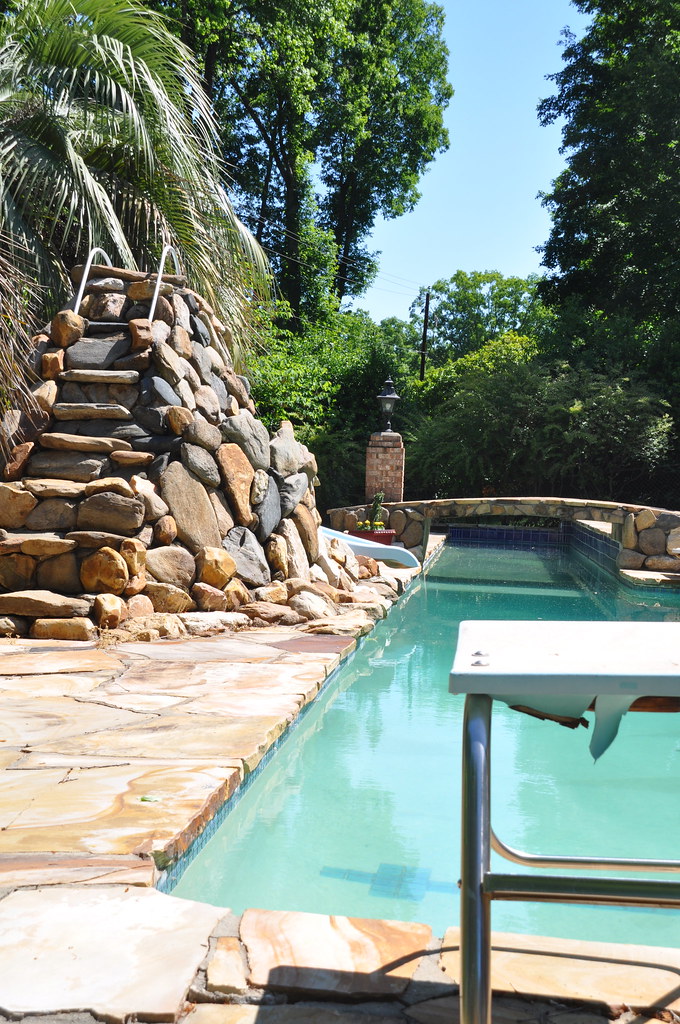
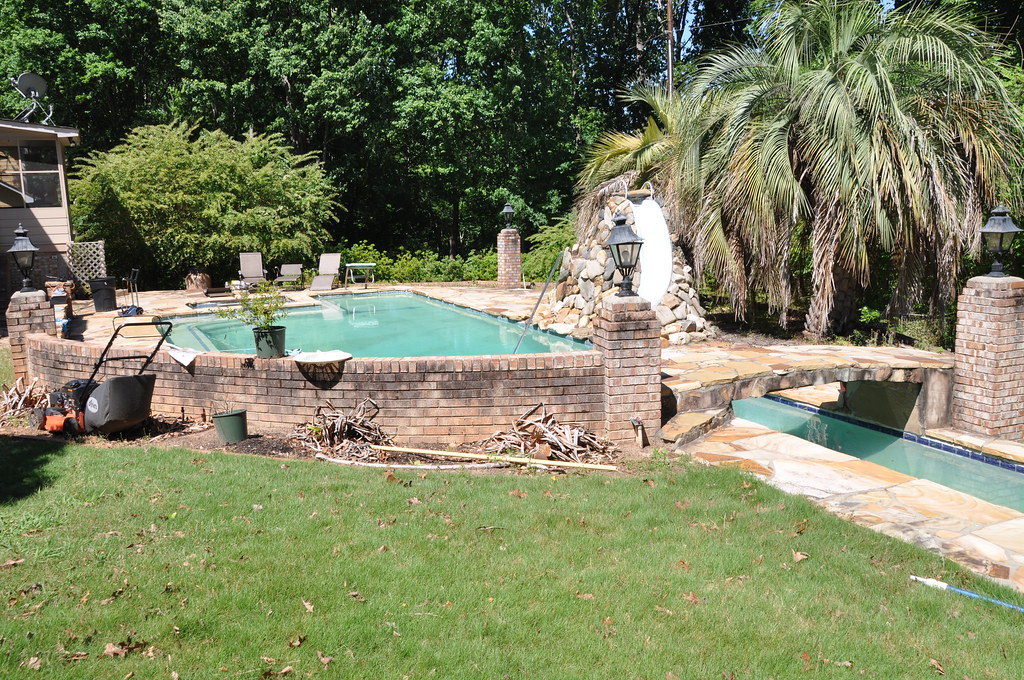
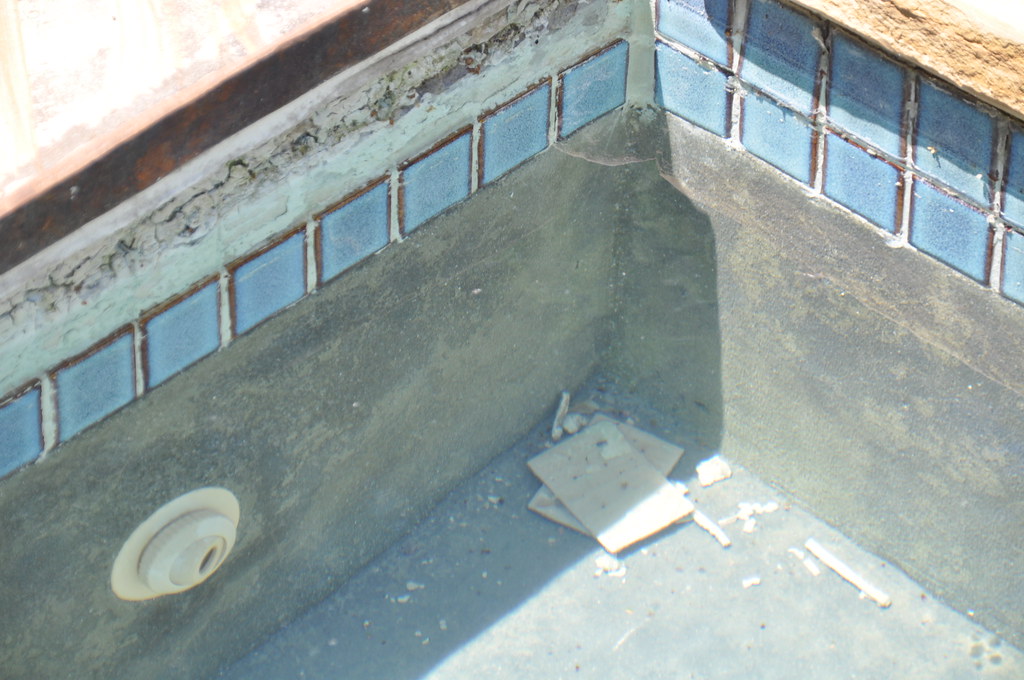
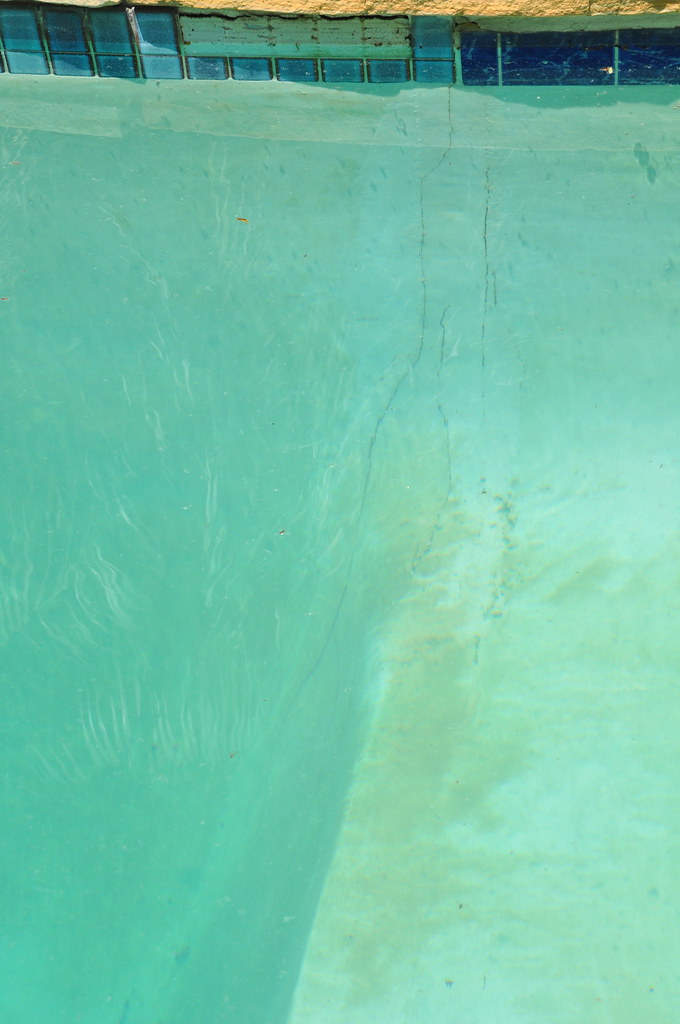
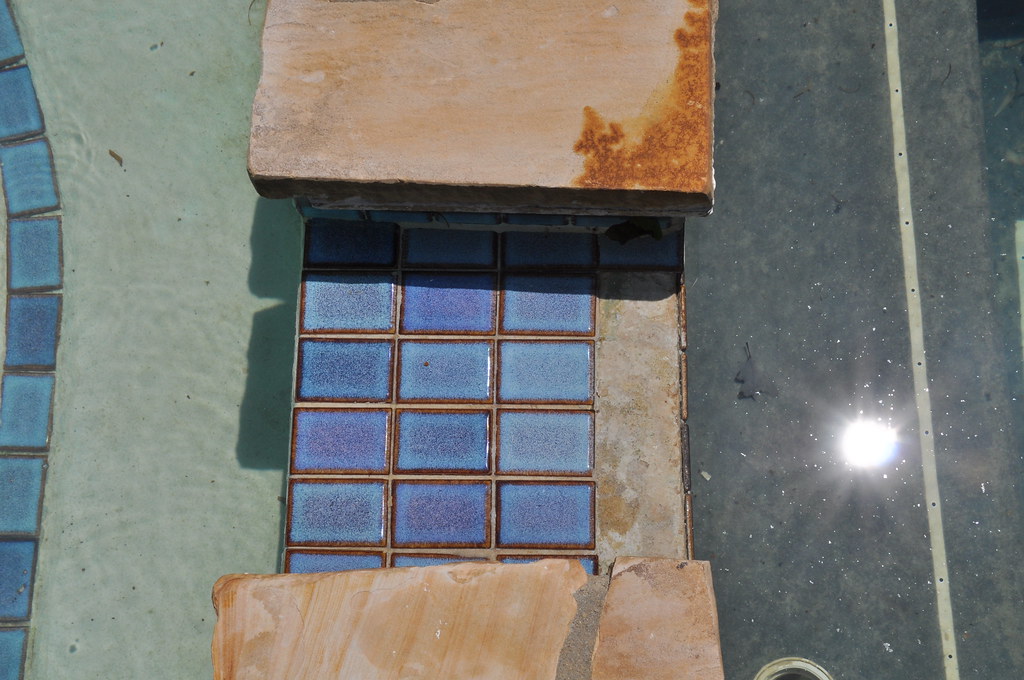
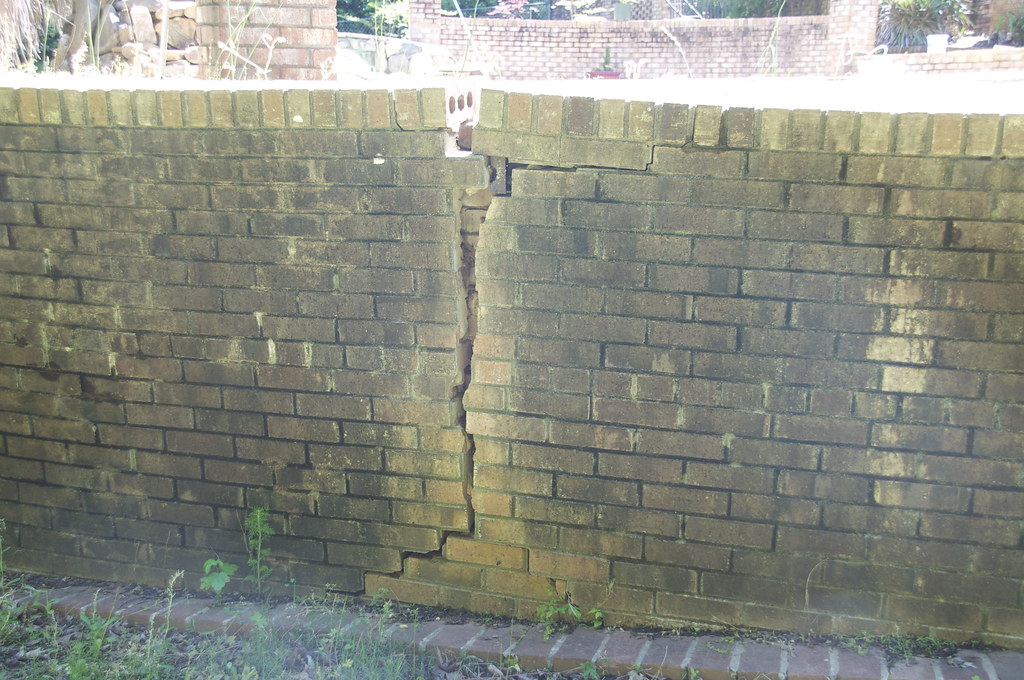
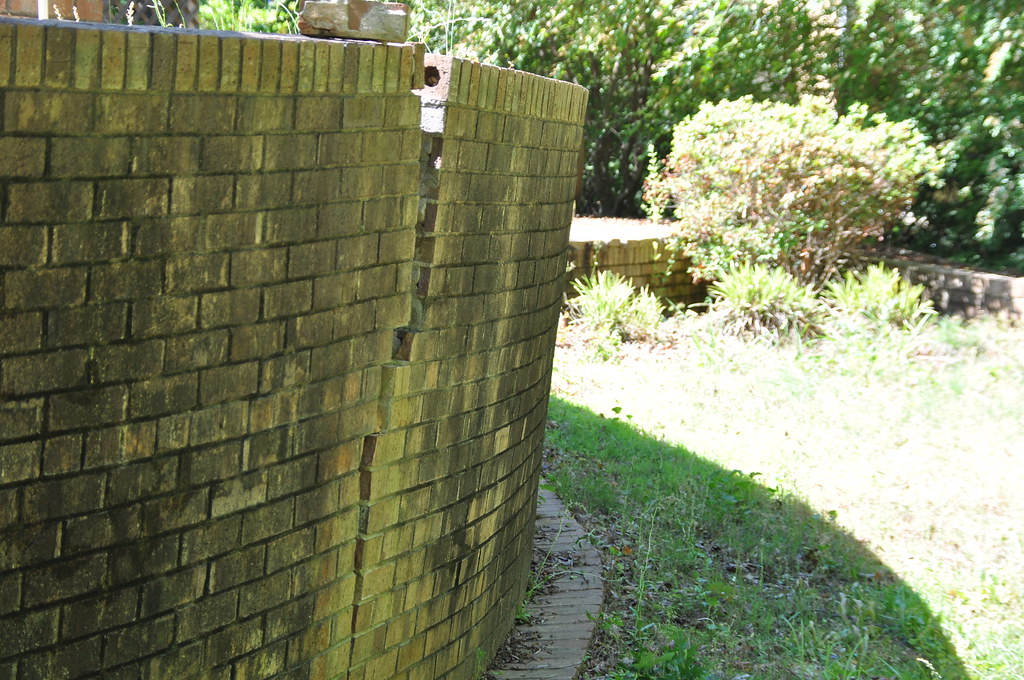
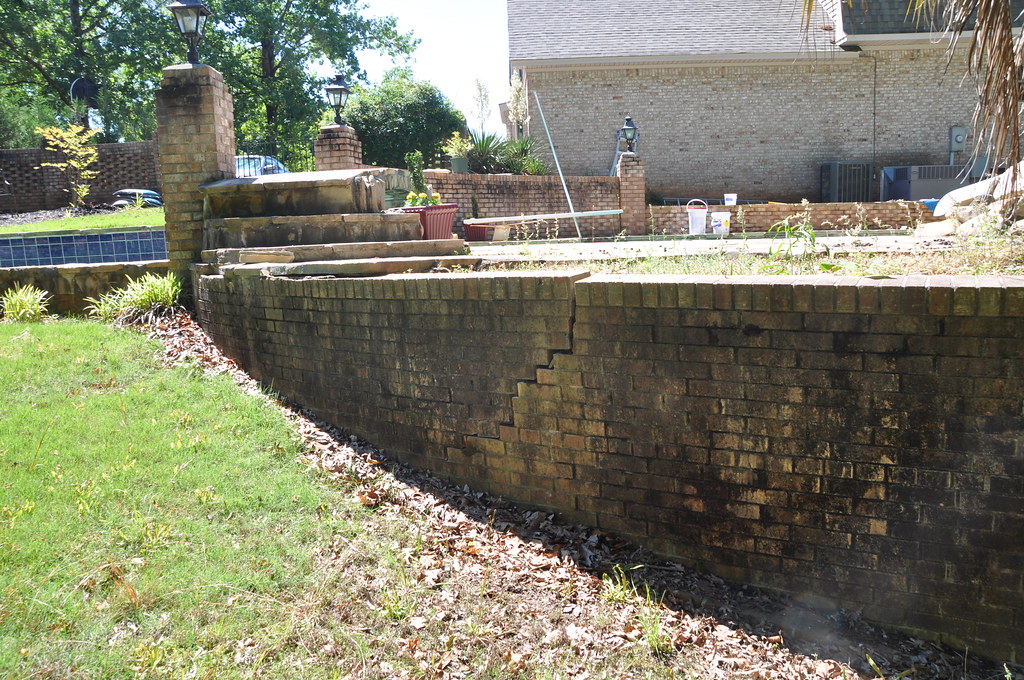











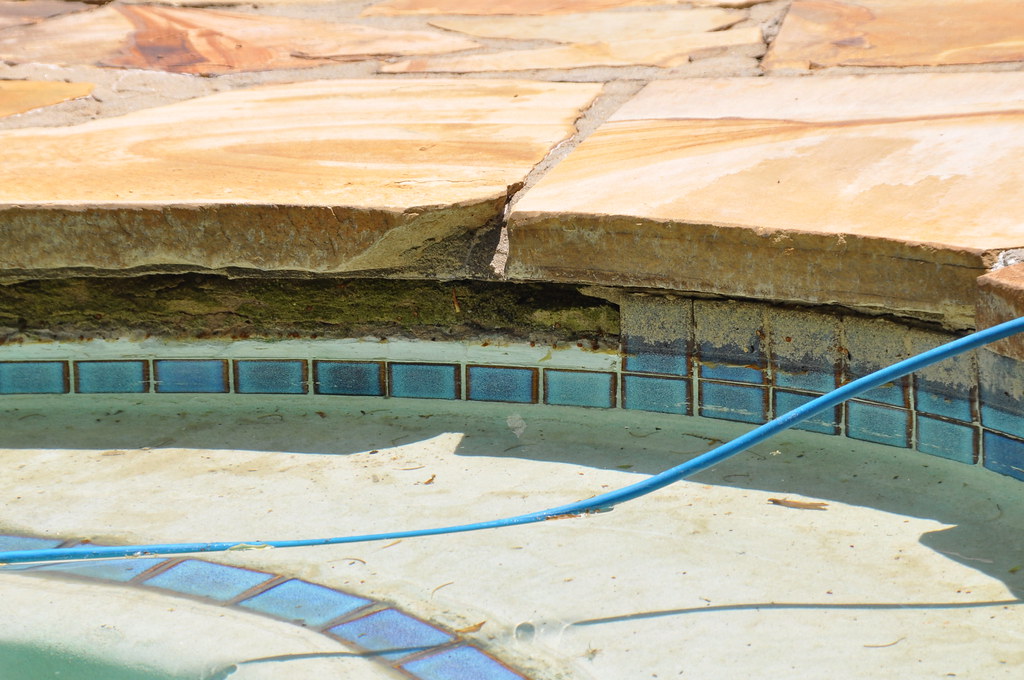
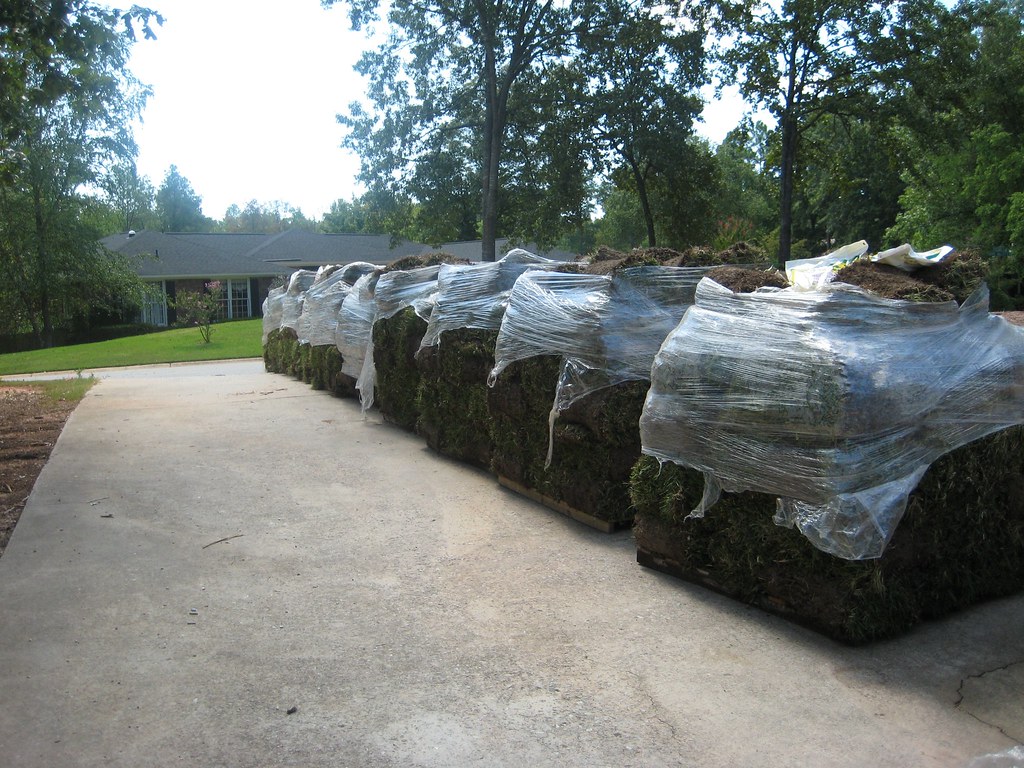
 )
)